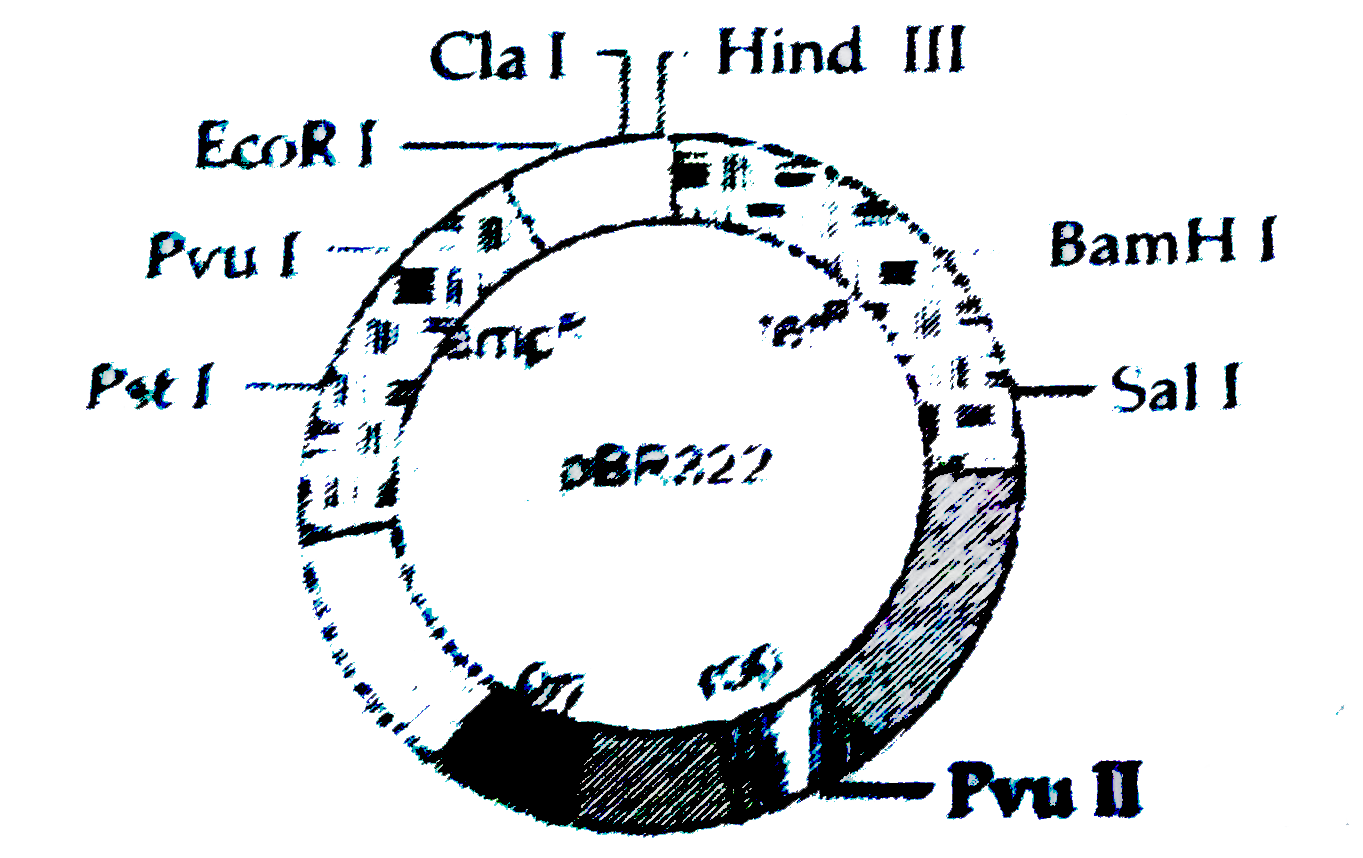Which is responsible for controlling the copy number of the linked DNA in a plasmid ?
Selectable marker
Ori site
Palindromic sequence
Recognition site
To answer the question "Which is responsible for controlling the copy number of the linked DNA in a plasmid?", we need to analyze the components of a plasmid and their functions.
1. Understanding Plasmids:
- Plasmids are small, circular DNA molecules found in bacteria that can replicate independently of chromosomal DNA. They often carry genes that provide advantages to the host organism, such as antibiotic resistance.
2. Identifying Key Components:
- Plasmids contain several important regions, including:
- ORI (Origin of Replication): This is the site where replication begins.
- Selectable Marker: This helps in identifying cells that have taken up the plasmid.
- Promoter: This initiates transcription of the linked genes.
- Recognition Sites: These are specific sequences where restriction enzymes can cut the DNA.
3. Role of the ORI Site:
- The ORI site is crucial because it is responsible for the initiation of DNA replication. It determines how many copies of the plasmid can be produced within a bacterial cell.
- The copy number of the linked DNA in a plasmid is directly influenced by the ORI site. Different plasmids have different ORI sequences that can lead to varying copy numbers.
4. Evaluating Other Options:
- Selectable Marker: This is used for identifying transformed cells but does not control the copy number.
- Palindromic Sequences: These are sequences that read the same forwards and backwards but do not influence the replication process.
- Recognition Sites: These are specific sequences recognized by restriction enzymes for cutting DNA, not for controlling copy number.
5. Conclusion:
- The correct answer is the ORI site, as it is responsible for controlling the copy number of the linked DNA in a plasmid.
Final Answer:
The ORI site is responsible for controlling the copy number of the linked DNA in a plasmid.
---
- Plasmids are small, circular DNA molecules found in bacteria that can replicate independently of chromosomal DNA. They often carry genes that provide advantages to the host organism, such as antibiotic resistance.
- Plasmids contain several important regions, including:
- ORI (Origin of Replication): This is the site where replication begins.
- Selectable Marker: This helps in identifying cells that have taken up the plasmid.
- Promoter: This initiates transcription of the linked genes.
- Recognition Sites: These are specific sequences where restriction enzymes can cut the DNA.
- The ORI site is crucial because it is responsible for the initiation of DNA replication. It determines how many copies of the plasmid can be produced within a bacterial cell.
- The copy number of the linked DNA in a plasmid is directly influenced by the ORI site. Different plasmids have different ORI sequences that can lead to varying copy numbers.
- Selectable Marker: This is used for identifying transformed cells but does not control the copy number.
- Palindromic Sequences: These are sequences that read the same forwards and backwards but do not influence the replication process.
- Recognition Sites: These are specific sequences recognized by restriction enzymes for cutting DNA, not for controlling copy number.
- The correct answer is the ORI site, as it is responsible for controlling the copy number of the linked DNA in a plasmid.
The ORI site is responsible for controlling the copy number of the linked DNA in a plasmid.
Similar Questions
(i) Name the organism in which the vector shown in inserted to get the copies of the desired gene.
(ii) Mention the area labelled in the vector responsible for controlling the copy number of the inserted gene.
(iii) Name and explain the role of a selectable marker in the vector shown.

View SolutionWhich factor/s is responsible for controlling the rate of decomposition?
View Solution
Knowledge Check
Which of the following statements are correct ?
(i) Restriction enzymes cut the strand of DNA a little away from the centre of the palindrome site, but between the same two bases on the opposite strands.
(ii) Hind ll always cuts DNA molecules at a particular point by reconginisng a specific sequence of six base pairs.
(iii) Separated DNA fragments cannot be visualised without staining on an agarose gel electrophoresis.
(iv) 'Ori' is the sequence responsible for controlling the copy number.
(v) DNA is a positively charged molecule.A(i), (iii) and (v)B(i), (ii),(iii) and (iv)C(iii),(iv) and (v)D(i),(ii),(iii),(iv) and (v)Which of the following is a plasmid?
ApBR 322BBam H ICSal IDEco RI
Which of the following is a plasmid ?
View SolutionWhich of the following is responsible for controlling heart beat?
View Solutionmutations are mainly responsible for controlling :
View SolutionThe technique which is responsible for making multiple identical copies of any template DNA called_________.
View SolutionMaximum number of bases in plasmids is
View SolutionI. Transform bacteria with recombinant DNA molecule.
II. Cut the plasmid DNA using restriction enzymes.
III. Extract plasmid DNA from bacteria cells.
IV. Hydrogen-bond the plasmid DNA to non-plasmid DNA fragments.
V. Use ligate to seal plasmid DNA to non-plasmid DNA.
From the given list, which of the following is the most logical sequence of steps for splicing foregain DNA into a plasmid and inserting the plasmid into a bacterium ?
View Solution
